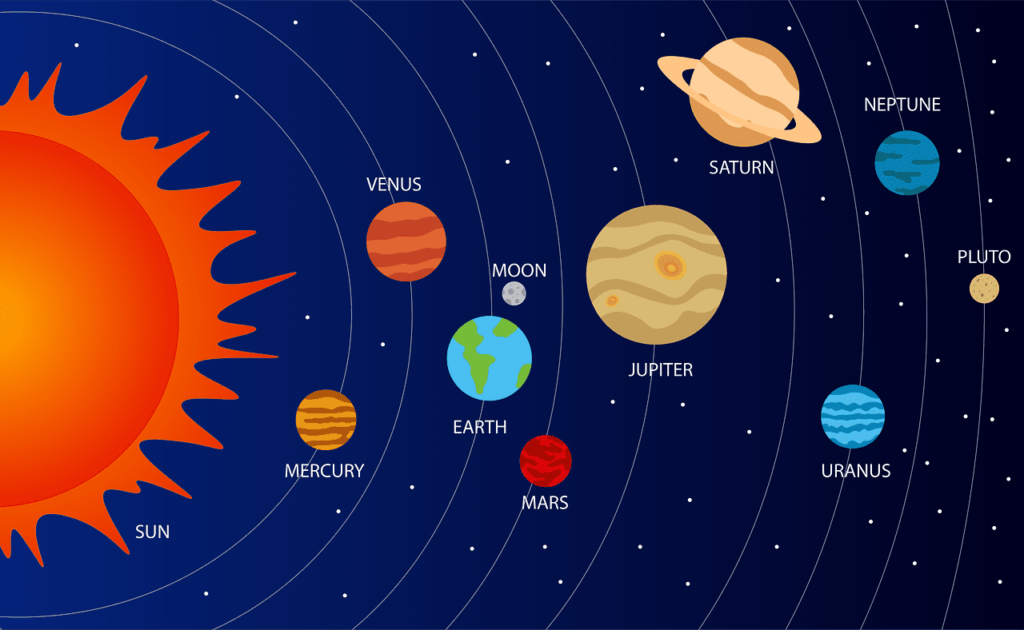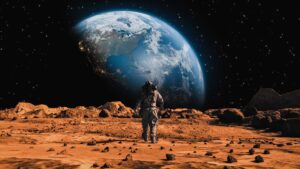The creation of our solar system is a fascinating tale of cosmic events spanning billions of years. Understanding this process gives us insights into the origins of our planet, the other celestial bodies within our solar neighborhood, and the complex forces at play in the universe. This comprehensive guide delves into the steps that led to the formation of the solar system, from the birth of the Sun to the creation of planets and other celestial objects.
1. The Birth of the Solar Nebula
The Role of Molecular Clouds:
- What are Molecular Clouds?: These are vast regions of gas and dust in space, primarily composed of hydrogen molecules. They are the birthplaces of stars.
- Collapse of a Molecular Cloud: Approximately 4.6 billion years ago, a disturbance, possibly a nearby supernova explosion, caused a region of a molecular cloud to collapse under its gravity, forming the solar nebula.
Formation of the Solar Nebula:
- Spinning Disk of Gas and Dust: As the cloud collapsed, it began to spin and flatten into a disk called the solar nebula. The material within the disk started to heat up and form a dense center.
2. The Formation of the Sun
Protostar Development:
- Central Condensation: The dense center of the solar nebula continued to contract and heat up, eventually forming a protostar.
- Nuclear Fusion Ignition: When the temperature and pressure in the core of the protostar reached sufficient levels, nuclear fusion of hydrogen into helium began, and the Sun was born.
The Sun’s Impact on the Solar Nebula:
- Solar Wind: The young Sun emitted strong solar winds that blew away lighter elements from the inner regions of the solar nebula, influencing the composition of the forming planets.
3. Formation of Planets and Other Celestial Bodies
Accretion Process:
- Dust and Gas Coalescence: Within the spinning solar nebula, dust and gas particles began to stick together through electrostatic forces, forming planetesimals.
- Gravitational Attraction: As planetesimals grew larger, their gravitational pull increased, attracting more material and leading to the formation of protoplanets.
Differentiation of Planetary Types:
- Inner Solar System (Terrestrial Planets): Closer to the Sun, the high temperatures caused volatile substances to evaporate, leaving heavier elements like metals and silicates to form the rocky planets: Mercury, Venus, Earth, and Mars.
- Outer Solar System (Gas Giants and Ice Giants): In the colder regions beyond the asteroid belt, lighter gases and ices could condense, leading to the formation of the gas giants (Jupiter and Saturn) and the ice giants (Uranus and Neptune).
Asteroids, Comets, and Moons:
- Asteroid Belt: Leftover planetesimals between Mars and Jupiter that never formed into planets due to Jupiter’s gravitational influence.
- Kuiper Belt and Oort Cloud: Regions filled with icy bodies and comets that formed in the outer reaches of the solar system.
- Moon Formation: Many moons formed from the accretion of debris around their parent planets or were captured by the planets’ gravity. Earth’s Moon likely formed from the debris of a massive collision between Earth and a Mars-sized body.
4. The Evolution of the Solar System
Late Heavy Bombardment:
- Period of Intense Impacts: About 4.1 to 3.8 billion years ago, the solar system experienced a period of frequent collisions, shaping the surfaces of the terrestrial planets and moons.
Planetary Migration:
- Shifting Orbits: The gas giants, particularly Jupiter and Saturn, are believed to have migrated from their original positions, influencing the orbits of other celestial bodies and contributing to the current configuration of the solar system.
5. Modern Understanding and Research
Scientific Missions and Discoveries:
- Space Probes: Missions like Voyager, Cassini, and New Horizons have provided invaluable data about the outer planets, their moons, and the Kuiper Belt.
- Telescopic Observations: Advanced telescopes, both ground-based and space-based like Hubble and James Webb, have enhanced our understanding of the solar system’s formation and evolution.
Current Theories and Models:
- Nebular Hypothesis: The prevailing theory that the solar system formed from the gravitational collapse of a region within a molecular cloud.
- Planetary Formation Models: Continuous refinement of models to explain the differences in planetary compositions and the presence of exoplanets around other stars.
Conclusion: The Cosmic Tale of Our Solar System
The creation of the solar system is a story of cosmic dust and gas coming together to form the Sun, planets, and other celestial bodies we observe today. This process, driven by gravity, electrostatic forces, and dynamic interactions, showcases the complexity and beauty of our universe.
Key Takeaways:
- The solar system began as a molecular cloud that collapsed to form a spinning solar nebula.
- The Sun formed at the center of the nebula, igniting nuclear fusion and influencing the formation of planets.
- Planets formed through the accretion of dust and gas, with different compositions based on their distance from the Sun.
- The solar system has evolved over billions of years through processes like planetary migration and late heavy bombardment.
Understanding the formation of the solar system not only helps us appreciate our place in the cosmos but also guides future explorations and discoveries in astronomy and planetary science.















